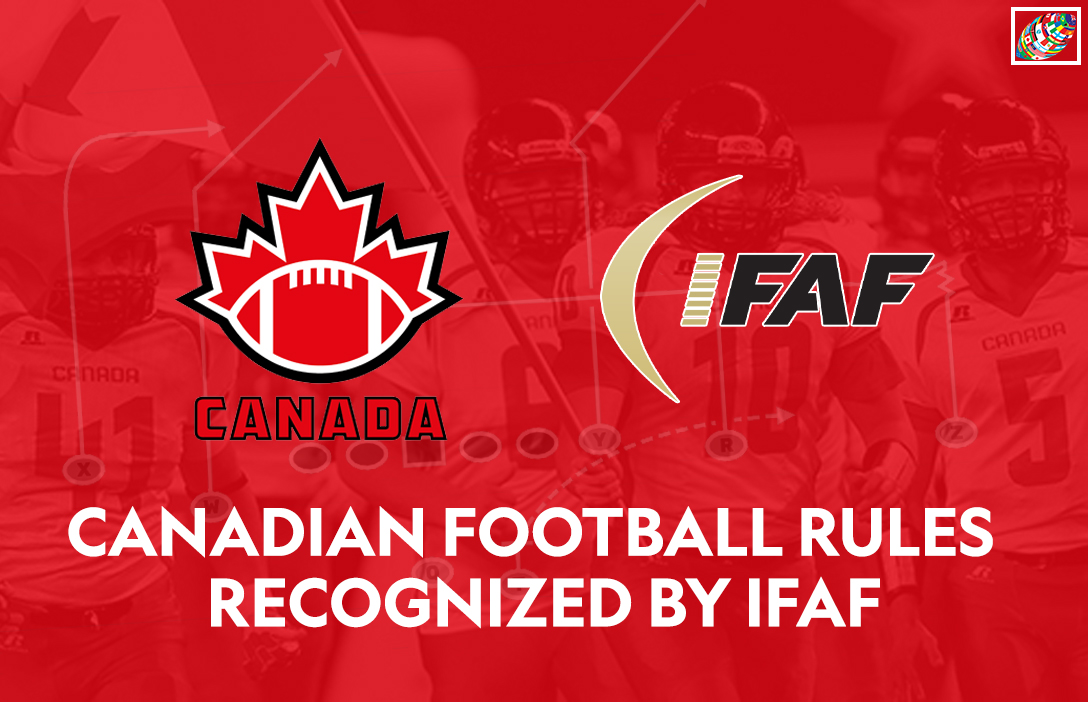Canadian football rules recognized by IFAF

The International Federation of American Football (IFAF), the international body responsible for gridiron football, has approved Canadian football rules in international competitions. The Canadian Amateur Football Rule Book may be used for international competitions sanctioned by IFAF.
“We are thrilled that IFAF recognizes 12-player football supporting the current international tackle rules,” said Football Canada president and IFAF General Secretary Jim Mullin.
IFAF president Pierre Trochet:
“The Canadian development model of the sport is an example for all nations within the IFAF to learn best practices. This is another step to take advantage of the culture and expertise in one of our leading football nations to grow our sport worldwide and provide more competition opportunities.”
The Canadian Amateur Football Rule Book will not replace the IFAF rule book. Nor will it be a path for continental or World Championship qualification.
“As Football Canada continues to work with IFAF, I believe this opens the door for international friendlies and tournaments to be staged in Canada employing the infrastructure communities have invested in for our sport from coast to coast,” Mullin said.
IFAF Americas Chair Javier L’Episcopo views this as a chance to build stronger regional links and events:
“We are pleased that this opens the opportunity to play more international and university club games in quality facilities across Canada. More competition can grow the sport throughout the continent.”
The Canadian ruleset will be available to all nations through various IFAF platforms. Besides 12 players on the field, there are some essential differences between Canadian football and the international American Football game:
- Field size: Canadian fields are 110 yards long by 65 yards wide, with endzones that are 20
yards deep. Goal posts are on the goal line. A metric version of the field with 100-metre-long
fields by 60 metres wide fits goal line to goal line on a rugby field. - Downs: Teams have three downs to make 10 yards. A rule variant allows for four downs to
make 10 yards if desired. - Pre-snap motion: Offensive backs may move toward the line of scrimmage before the snap
of the football. - Scoring: This is the same as the international American game, except the rouge, also known
as “the single.” This is awarded for a kicked or punted ball not returned from the end zone. - Punt returns: All punts in bounds are returned. The punting team must provide the returner
with a five-yard halo before the player touches the ball. The punting team cannot down
punts.
The first documented Canadian football game was played on November 9, 1861, 161 years ago, at University College, University of Toronto. The Canadian football rulebook has existed in some capacity since the 1880s. In 1903, the Burnside rules transformed Canadian football from a rugby-style game to the gridiron-style game it has evolved into today. The first Canadian amateur rulebook was drafted and edited by legendary official Hec Crighton in 1965 for use by Canadian universities. Football Canada has been responsible for its development over the last six decades working with officiating stakeholders.
“As a proud Canadian, I can’t wait for us to invite the world to play our great game,” Mullin said. “This is a great day for international and Canadian football.”